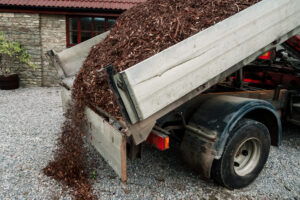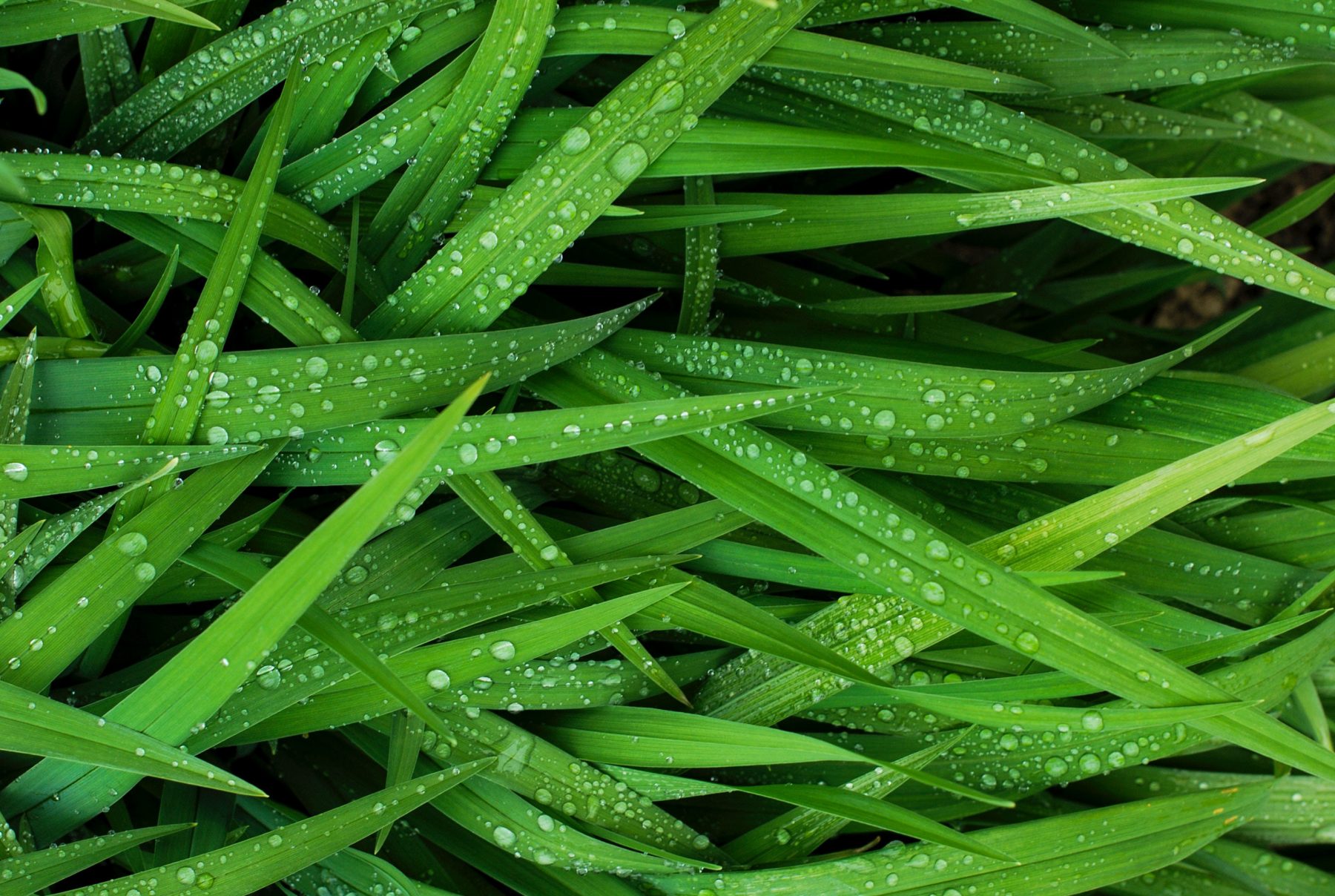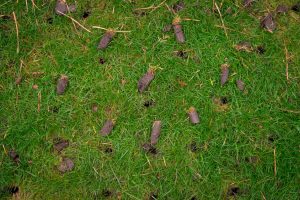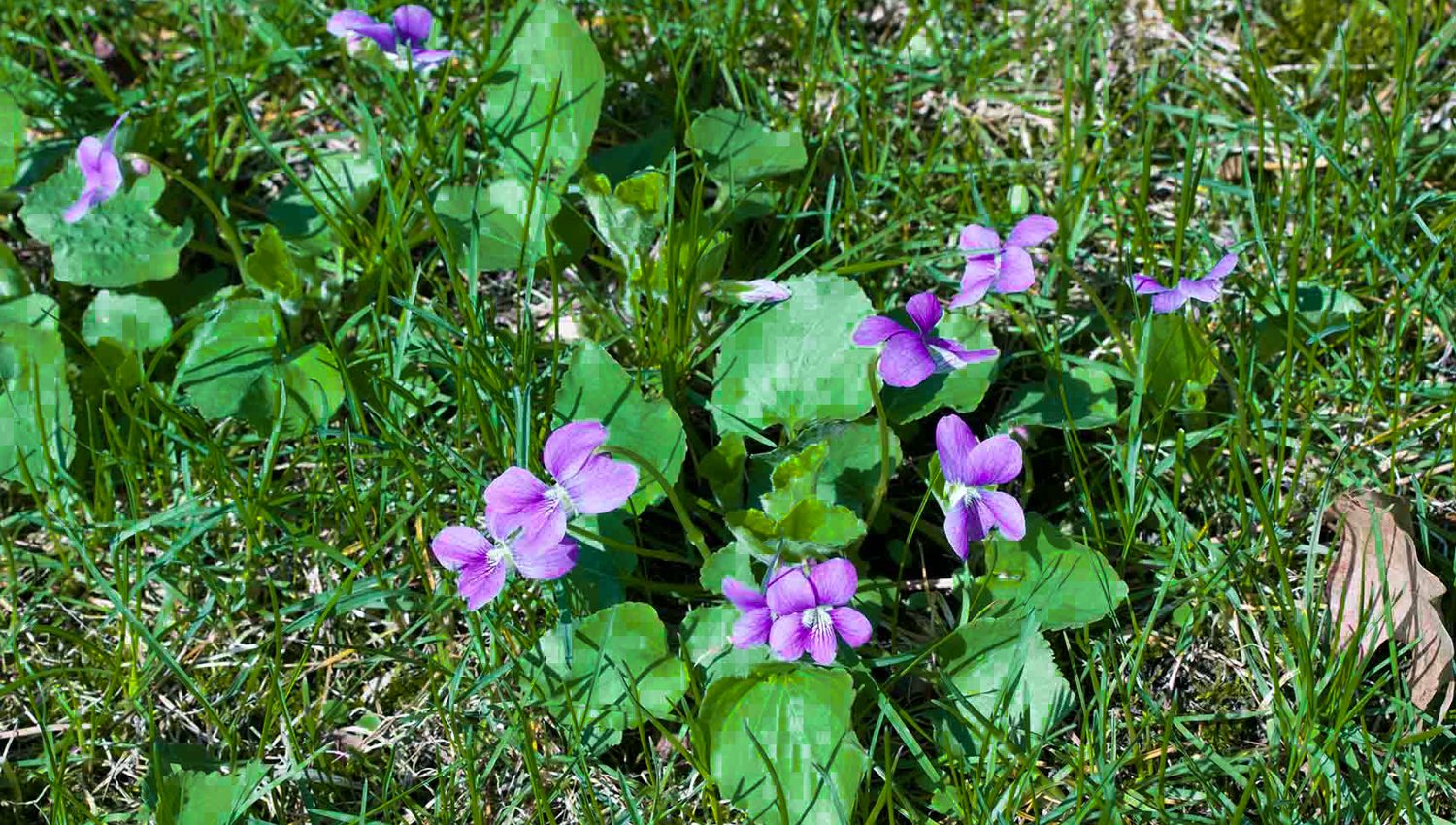
What Is Wild Violet
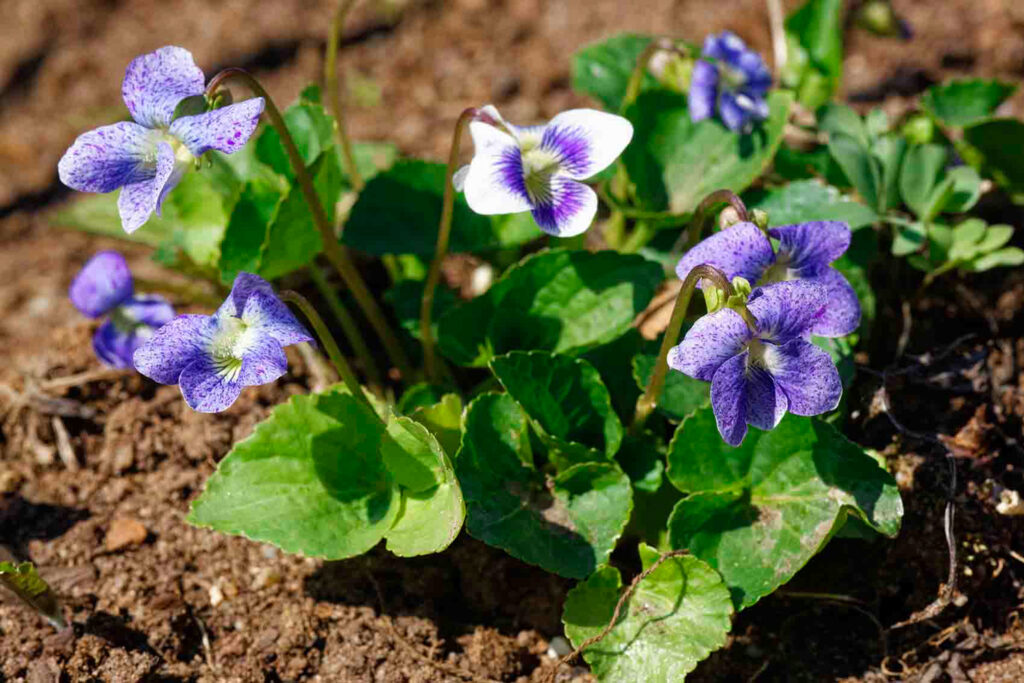
Wild violets (Viola sororia/Viola papilionacea) are broadleaf weeds that are most easily identifiable by their brightly colored blooms. They can range from 2 to 10 inches in height, but most plants will be about 4 to 6 inches in height when fully matured. Most varieties tend to have small yellow centers/seed pods surrounded by five hairy flower petals that are generally purple or blue in color, but colors like yellow and white are not uncommon. The 5 petals are arranged with 2 on top and 3 on bottom, and they are known to droop slightly downward.
The leaves of wild violet weeds are famously heart-shaped with scalloped edges, and they will have a glossy or waxy appearance. Identifying these heart-shaped leaves is a great way to catch a wild violet invasion before the plant can flower and drop more seeds.
What To Look For In Your Lawn:
- Purple, blue, or white flowers
- 2 petals on top, 3 on bottom
- Short stems, about 4-6 inches
- Drooped stems at the flower
- Heart-shaped leaves
- Scalloped edges on leaves
- Hairs low on the stems
- Hairs on the flower petals

When & Where Does Wild Violet Grow
When
As perennials, wild violets will emerge every spring if the plant is not removed. In ideal conditions, a wild violet weed can survive up to 10 years. The weed is fully matured when the flowers bloom and seeds are produced, which takes place between April and August. These weeds emerge every spring and last until temperatures get too cold in fall, typically when temperatures are consistently 65 degrees or less.
Where
Wild violets grow mainly in the eastern half of the United States, and they are most commonly found in moist areas of full sun or partial shade, such as near streams and ponds or at the edges of woodlands. In residential lawns, you can expect to find wild violets in areas that are not heavily shaded by trees or other obstructions. They prefer well-draining soil that is rich in nutrients. The rhizomes they produce in the soil help spread the invasion to areas that may be nowhere near an existing weed in your lawn, which is why it is so important to know how to control a wild violet invasion.

Seeds
Wild violets are spread by seed dispersal. When the plant matures, the seed pods drop seeds into the surrounding soil. New weed seedlings may emerge right where seeds are dropped, or those seeds may be carried away to germinate elsewhere. The seeds are very light, and they are often taken by ants and carried elsewhere. Other factors like wind and water can transport these seeds too, which makes it difficult to predict exactly when or where a new wild violet weed will emerge.
Roots
In addition to seed dispersal, wild violet can also spread via its root system. These weeds develop rhizomes in the soil, which are essentially underground stems. Rhizomes spread horizontally and crawl underneath the soil surface, with new plants sprouting from these rhizomes constantly. The roots of wild violet can overwinter and pause their growth when temperatures are too cold. When it warms up again in spring, the rhizomes and roots will continue to grow, and more wild violet will continue to appear in your yard until the weeds are removed or killed.
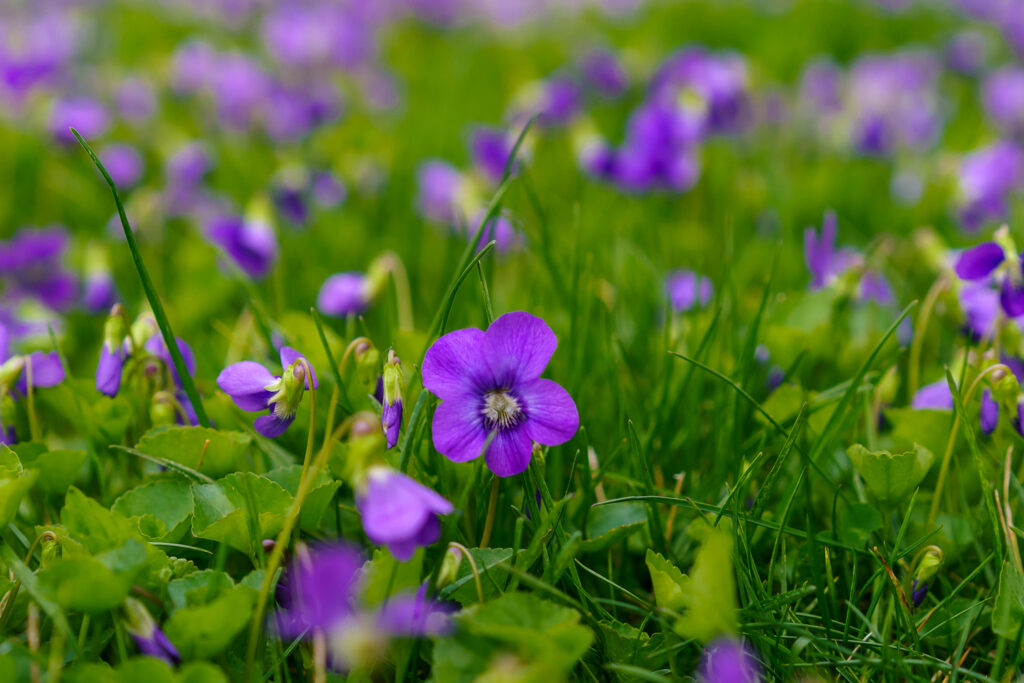
Wild violets threaten the health and beauty of your lawn, as they can quickly invade large areas and choke out grass. This can make it hard for turfgrass to thrive in areas overrun with wild violet. In addition, these weed plants are notorious for stealing essential nutrients from the soil that should be going to your grass. The lateral roots of wild violets are especially adept at taking those resources just beneath the soil surface away from turfgrass, leading to an unhealthy and unsightly lawn.
Don't Be Fooled! People sometimes get enchanted with the attractive flowers of wild violet that pop up in their lawns. However, this plant is categorized as a weed because of its unhealthy growth and reproduction rate that will outcompete your grass and garden plants. Do not allow these flowering weeds to grow!
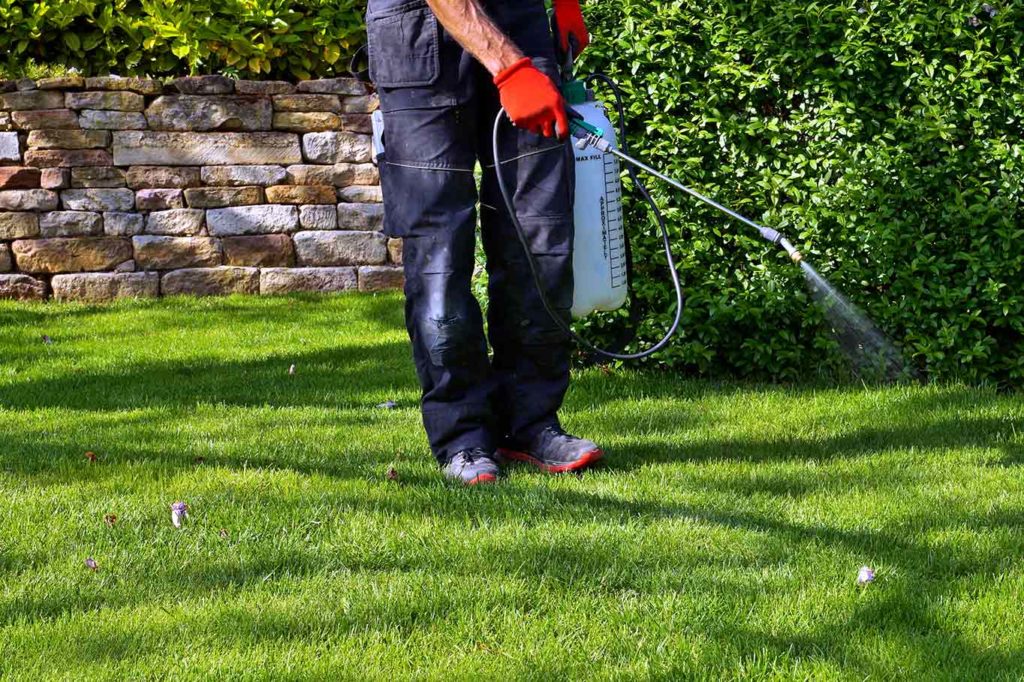
How To Treat Wild Violet
Wild violets have some of the hardiest roots you are likely to encounter, so pulling them up is not typically advisable. The rhizomes in the soil are so sturdy that they will stay in place even if the entire plant is removed above the surface, and a new plant will simply re-emerge from the remaining root fragments.
The best way to prevent wild violet growth is to maintain a dense lawn. Proper mowing, fertilizing, and watering will help maintain turfgrass health and reduce the chances of wild violets invading. We would encourage any homeowner to call a professional lawn care provider, like Elite Lawn Care, to treat their lawn for wild violet or other lawn weeds. If you decide to take a whack at it yourself, keep the following tips in mind to control and prevent an invasion:
Apply Broadleaf Weed Killer:
A post-emergent broadleaf killer (2,4-D or dicamba) can be applied directly to an existing weed.
Avoid Pulling:
Even the smallest bit of wild violet roots in the soil can sprout a new plant, and these roots are notoriously strong.
Apply pre-emergent:
In early spring, before weeds arrive, apply pre-emergent to block any wild violets from popping up later.
Use Mulch:
Mulching your gardens after your desired flowers have emerged is a great way to suffocate germinating wild violet seedlings.
Overseed:
Maintaining a thick lawn is the best way to prepare your grass for wild violets, and applying seed is necessary for lawn density.
Mow Higher:
Keep your lawn around 3-4 inches tall in order to block sunlight from reaching the low-growing wild violet weeds.
Start Your Quote Today! Getting Started
Get your weekend back & simplify your life this season. Trust Elite Lawn Care for your Lawn Care, Landscaping & Snow Removal needs.
-
1Choose Your ServicesChoose the services your property needs throughout the year.
-
2Set Up & Finalize Your AccountFill out the form & one of our team members will contact you.
-
3Discover The DifferenceServices are automatically scheduled, completed & billed.



